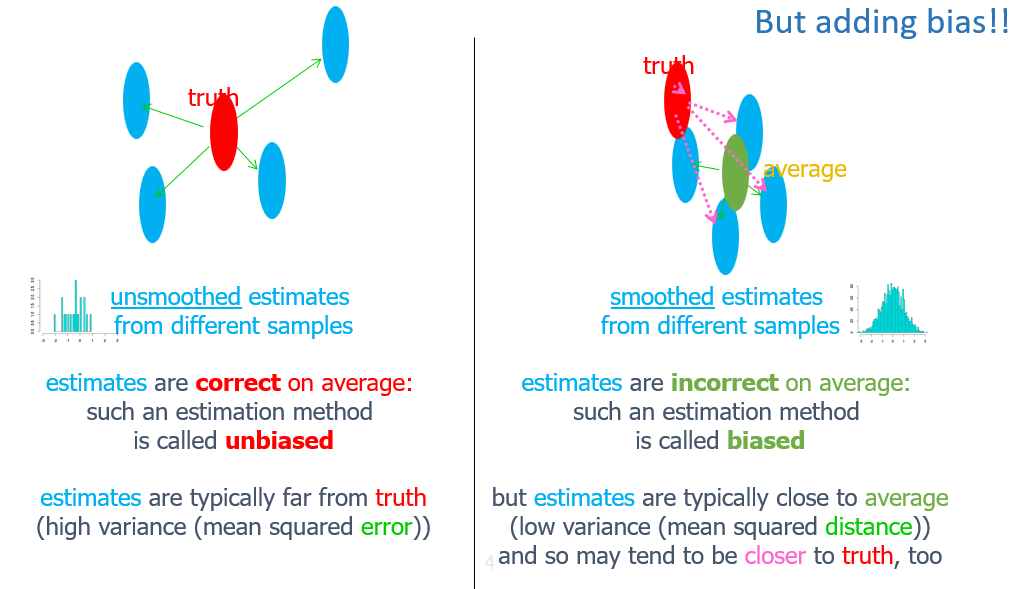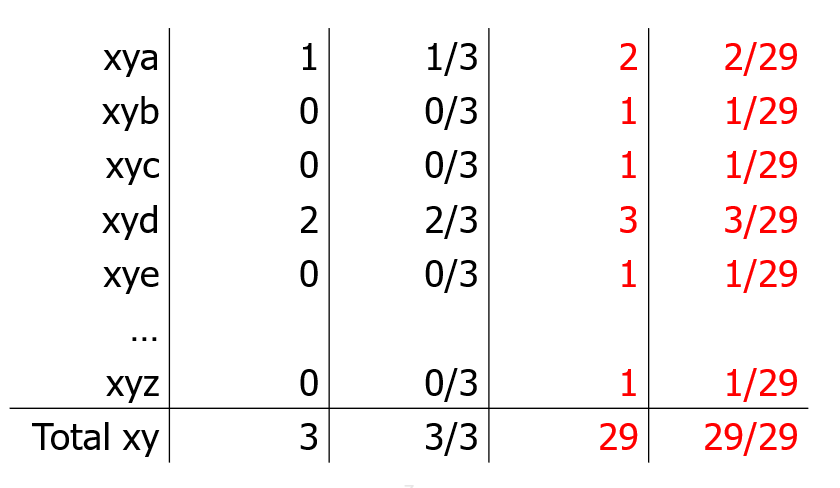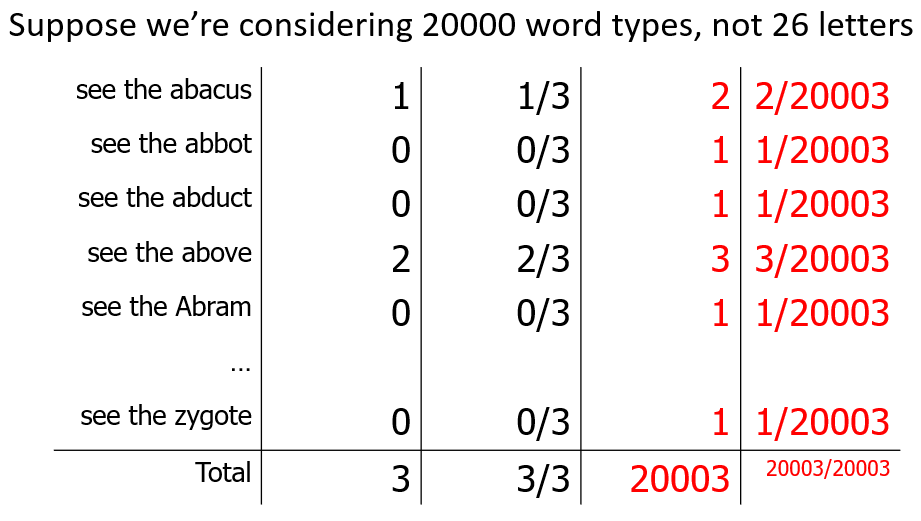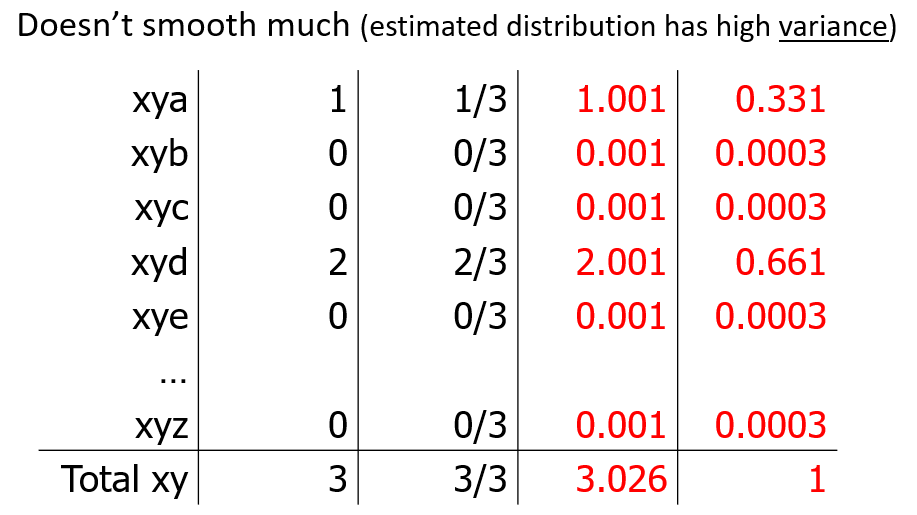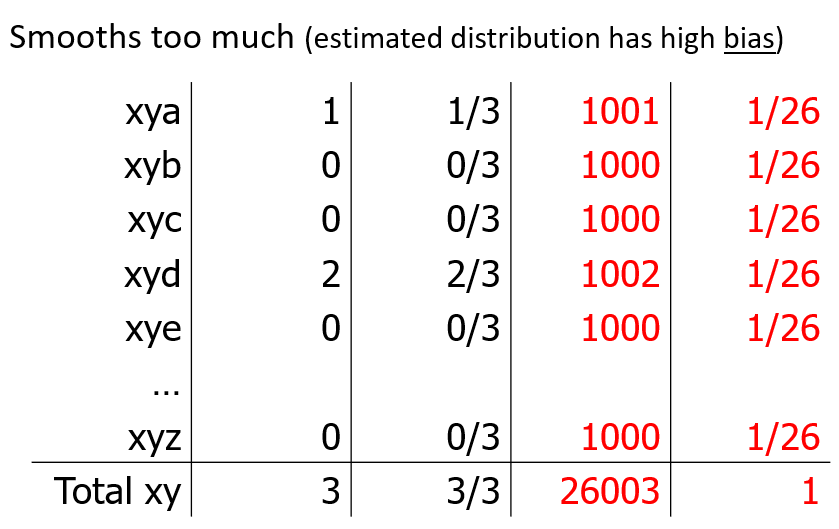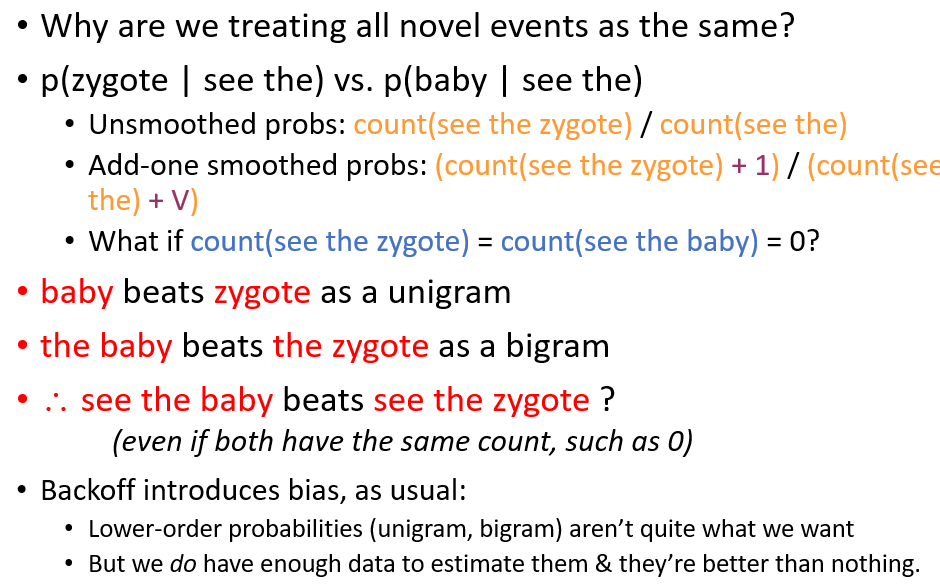6 - Smoothing
ucla | CS 162 | 2024-02-06 11:41
Table of Contents
Smoothing
- reduces variance by introducing bias
- smoothing moves probability mass from seen samples to unseen samples (As they likely are valid but just not present in training)
Add 1 count to each instance and add $ V $ to the denominator (one for each instance) - to maintain total probability law - this impacts the dataset less the larger the number of instances/observations
Limitations
- if our vocab size is large, we just reduced the probability of the truly observed instances to near 0
- i.e. we now have 19,998 novel events (unseen events that we add counts to) - now we are more likely to see novel events than training data at all
Add-Lambda Smoothing
- to fix this increase in novel event probs, we add some
- when lambda is too small -> low smoothing = high variance
- when lambda too big -> high smoothing = high bias
- thus we select the best lambda using k-fold CV (take avg)
- the method we use specifically is to hold out one fold (e.g. 20%) for dev set to find a good lambda then train on the remaining
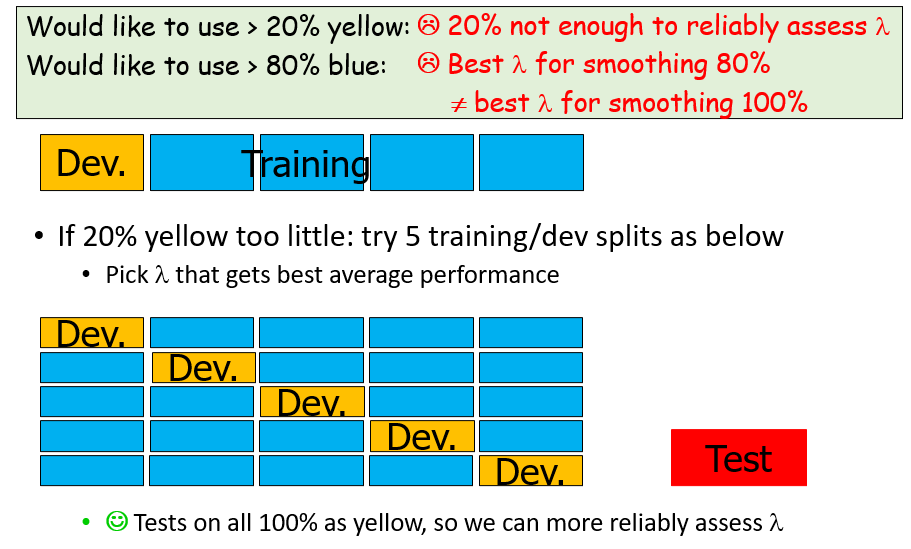
- too increase the amount of data we can train on, we can try leave-one-out CV (allows 99% of data training) but needs to run
- but for LMs its cheap to leav out one sentence and retrain by subtracting 1 from that sentence’s count
Good-Turing Smoothing (optional)
- the method we use specifically is to hold out one fold (e.g. 20%) for dev set to find a good lambda then train on the remaining
- other smoothing methods

Backoff Smoothing
- dont give equal weight to all novel events
- if some tokens are more likely than other tokens in both unigrams and bigrams, then it is likely that its unseen trigram will also be more likely (i.e. probs of trigram is a weighted sum of probs of bigram + unigram)
- Jelinek-Mercer smoothing
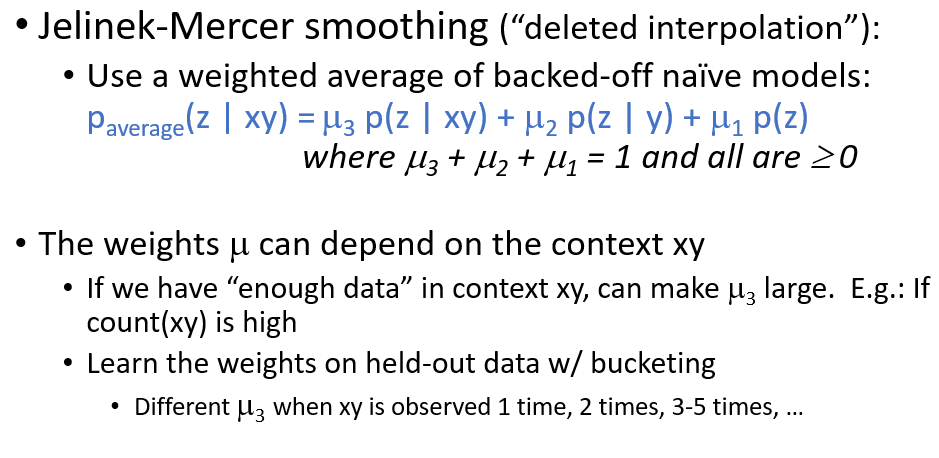
Smoothing + Backoff

